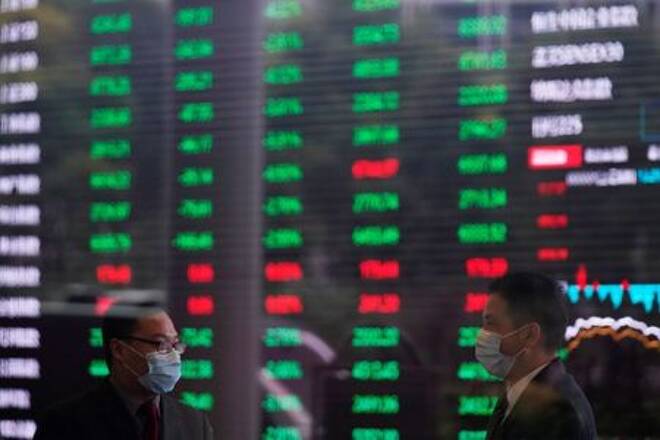Advertisement
Advertisement
The Inventory Cycle – Boring But Important Market Setter. Part 2.
Published: May 18, 2021, 08:30 GMT+00:00
What I wrote on 11/24/2020 is still valid today. On November 24, 2020 I published the article The Inventory Cycle - Boring But Important Market Setter. The main idea was to review a simple indicator and its impact on the business cycle, commodities (copper, XLB, and XME), and commodity sensitive stocks (FCX and CAT).
Summary
- Government and Fed stimulus create volatility.
- But businesses must navigate through it and replenish the shelves.
- Inventory management moves the markets.
What is the “boring indicator” saying now?
Business managers must filter all the news coming from different sources such as pandemics, cartels, supply chain difficulties, foreign or domestic supplier availability, trends in commodities and interest rates, changes in value of the dollar, and the Fed. They must make a crucial decision: how much to produce to replenish the inventories at levels needed to meet the demand for their goods.
The business cycle transitions through four phases as management changes its inventory policies. In Phase 1 and Phase 2 business decides to build inventories to meet growing demand. This decision results in increases in the purchase of raw materials, hiring more people, increase in borrowing to finance operations and improve and expand capacity.
This is the time the business cycle grows through Phase 1 and Phase 2. This is also the time commodities, copper, crude oil, lumber, agricultural, interest rates, and inflation rise. The increase in these prices is a testimonial the economy is strengthening.
The problem arises toward the end of Phase 3. The continued rise in commodities, crude oil, and inflation eventually reduces consumers’ purchasing power in a meaningful way. The response is a slowdown in spending.
In Phase 3 managers begin to experience rising inventories compared to sales with a direct impact on their financial performance. The need to reduce inventories involves cuts in the purchase of raw materials, reduction in the workforce, and declines in borrowing. This process will continue until inventories are in line with demand. The inventory to sales ratio keeps rising during these times. During Phase 3 and Phase 4, because of the action of business, commodities decline, wages slow down, and interest rates decline.
When inventories are finally adjusted to the desired level matching their growth with the growth of demand, the business cycle transitions from Phase 4 to Phase 1. At this point the inventory to sales ratio starts rising again. It reflects sales rising faster than inventories. Business will have to increase production to restock inventories. And the business cycle moves to Phase 1. The markets will respond promptly as discussed in detail in my article here.
The inventory to sales ratio published by the U.S. Census Bureau gives a good sense of where we are in the business cycle. A rise in the ratio means inventories are rising faster than sales. In this case investors should expect busines to cut inventories.
The inventory to sales ratio declines when sales rise faster than inventories. Busines is forced to increase production to replenish inventories. They must do so if they do not want to lose sales.
Since November, the inventory to sales ratio kept moving lower.The current sharp decline in the inventory to sales ratio suggests sales are rising much faster than inventories, forcing managers to keep increasig production. The markets have reacted exactly as they have always done during Phase 1 and Phase 2 of the business cycle when the inventory to sales ratio is heading lower – a strong economy, rising commodities, rising interest rates, rising inflation, and strong cyclical sectors.
The above chart shows (from top to bottom) the graphs of the 10-year Treasury bond yields, and the price of copper, crude oil, lumber. The business cycle indicator is shown in the bottom panel as updated in each issue of The Peter Dag Portfolio Strategy and Management on www.peterdag.com. An exclusive complimentary subscription is available to the readers of this article.
The chart shows a rising business cycle is accompanied by an increase in yields and commodity prices. Commodities and yields decline when the business cycle declines. For instance, the business cycle increased from 2016 to 2018 and copper, crude oil, lumber, and interest rates increased. The business cycle has been rising since March 2020 and yields and commodities have been rising since then.
The November article also suggested commodity sensitive stocks such as Caterpillar (CAT) and Freeport-McMoRan Inc. (FCX) were likely to outperform the market in response to the rise of the business cycle.
The above chart shows (from top to bottom) the ratio of CAT divided by SPY, the ratio of FCX divided by SPY, and the business cycle indicator. An increase in the ratio reflects the outperformance of the stocks compared to the market.
Key Takeaways
The trends reviewed in my article of November 24, 2020 are still in place.
The inventory to sales ratio keeps declining, pointing to continued strength in manufacturing.
The implication is commodities and interest rates are likely to rise as long as the inventory to sales ratio is declining, indicating sales outstripping inventory accumulation, and the business cycle indicator is rising.
Commodities and interest rates will peak when the inventory to sales ratio starts rising, indicating inventories rising faster than sales, and the business cycle indicator declines.
Commodity-sensitive stocks such as CAT and FCX will continue to outperform the market as long as the inventory to sales ratio declines and the business cycle rises.
A rise in the inventory to sales ratio and a decline in the business cycle indicator will suggest a change in portfolio asset allocation from cyclical to defensive sectors.
About the Author
George Dagnino, PHDcontributor
George Dagnino, PhD, is chairman of Peter Dag Strategic Money Management. As the former chief economist and risk manager for Goodyear, he managed $4 billion of interest rates and currency hedge portfolios.
Advertisement
